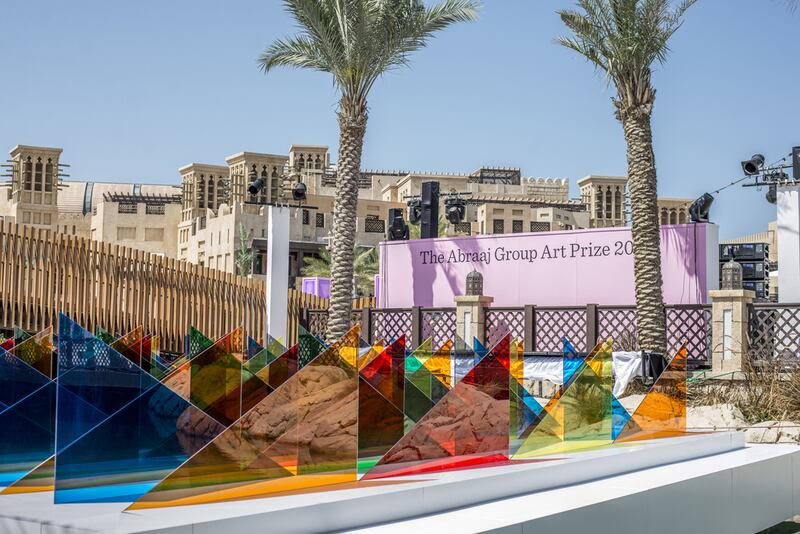After this week's announcement that Myriam Ben Salah is the curator for this year's edition of the Abraaj Group Art Prize, I caught up with her to ask her if she had anything specific in mind for the project.
AS: Congratulations on being appointed as Abraaj curator, will you be looking to previous years as inspiration or seeing this as a clean slate?
MBS: Thank you very much. I will definitely be charting a course among some great endeavours that have been implemented by the previous curators of the Prize. I was particularily interested in Omar Berrada’s approach for last year’s Prize exhibition, where he sharply defined the idea of “repetition” as a way to apprehend reality through four heterogeneous artistic practices. I also followed with attention Omar Kholeif’s project around history as a sort of constructed sphere, as these are thematics of great interest for me. I look forward to bringing my own vision into the mix though, without necessarily talking about a clean slate, I will certainly explore my own interests both in terms of thematics and the use of space, to make this 10th edition a special one. Obviously this will also all depend on the dialogue with the artist nominees soon to be selected.
AS: You said that you feel an urgency to work towards shifting the narratives around the MENASA region and its artistic practices - can you expand on that?
MBS: I think this urgency came from two distinct issues: media representation of the region on the one hand, and a certain homogeneisation of its artistic production on the other. Obviously both are related. Alternately romanticising it and fomenting fear towards it, the mainstream representational system of the West fosters an idea of the Middle East as a “serious” subject matter, burdened with religious and political subtext. This leads to a lock-knit in artistic production from the region: for a long time, artists from the region have been obsessed with struggle narratives and a rhetoric of the past, creating works that were almost a response to a “tacit commission” from the West (as per Moroccan scholar Mohamed Rachdi’s brilliant expression), arbitrarily linking authenticity with traumatic storytelling, thus catering to the expectations placed upon their productions—from the market, institutions, curators. Of course there is struggle in the region, but that is not a reason to look at it exclusively through the lens of failure or on the opposite side as a place of shiny exuberance and unflinching decadence. I admired initiatives such as Bidoun Magazine that started this fight against admitted narratives in a post 9/11 context. Obviously, the tenser the period is, the more we have to be careful aware of the images we circulate.
AS: Do you have any specific goals in mind already for the exhibition?
MBS: Well, one of the main goals is to work very closely with the winning artist to develop the most complete and fulfilled commission. Abraaj’s support is quite extraordinary in terms of resources and having this opportunity to produce in those conditions doesn’t happen that often in an artist’s career. It is great experience and challenge for a curator to accompany an artist in such an ambitious project. I think the other goals will shape up as soon as we know the name of the shortlisted artists and start a dialogue.
AS: As you are a writer and editor, will the accompanying publication be an important area of focus for you?
MBS: Absolutely! My vision for a publication—which also comes from the work I’m doing with Kaleidoscope—is that it shouldn’t be a mere support for documentation, but a creative platform that allows to develop an artist’s vision and dive into a practice in a different way. I am a fan of magazines and printed matter in general, which might be interesting in terms of formats to approach this year’s publication.
* The 10th edition of the Abraaj Group Art Prize will be unveiled at Art Dubai in March 2018.





